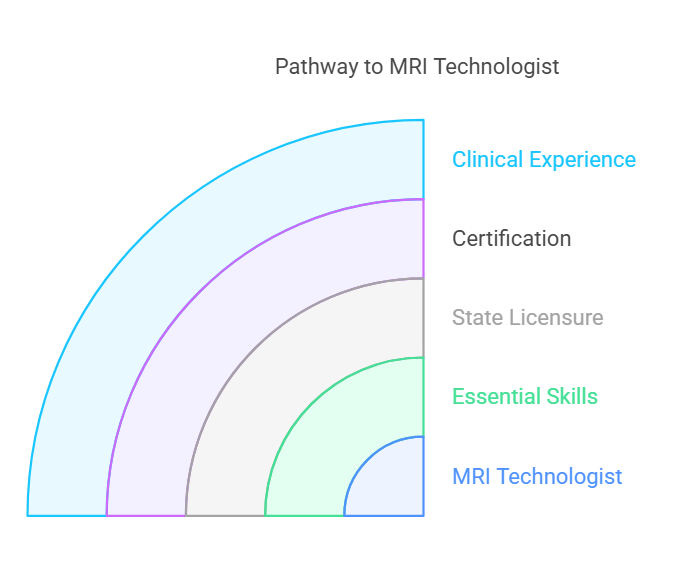how to become an mri tech
how to become an mri tech Magnetic Resonance Imaging (MRI) technology plays a crucial role in modern healthcare by providing detailed images that aid in diagnosing and treating various conditions. If you’re considering a career in this field, becoming an MRI technologist can be a rewarding choice. This guide will walk you through the steps, skills, and qualifications needed to pursue this career path, ensuring you make an informed decision.

What is an MRI Tech?
An MRI technologist, also known as an MRI tech, is a specialized medical professional responsible for operating MRI scanners. These advanced machines use magnetic fields and radio waves to create detailed images of the body’s internal structures. MRI techs work closely with patients and healthcare teams to ensure accurate imaging and patient safety.
Why Choose a Career as an MRI Tech?
Becoming an MRI tech offers several benefits:
- Job Stability: The healthcare sector is constantly growing, ensuring steady demand for MRI techs.
- Competitive Salary: According to the U.S. Bureau of Labor Statistics, MRI technologists earn a median annual salary of around $77,000.
- Meaningful Work: MRI techs play a critical role in diagnosing and treating patients, making the job fulfilling.
- Opportunities for Growth: With experience, MRI techs can advance to leadership roles or specialize further.
Steps to Become an MRI Tech
1. Research the Career
Understanding what the job entails is essential. MRI techs often work in hospitals, diagnostic labs, or outpatient centers. They must be detail-oriented, patient-focused, and comfortable working with technology.
2. Obtain a High School Diploma or Equivalent
A strong foundation in subjects like math, biology, and physics is crucial. High school courses in these areas will prepare you for the next steps in your education.
3. Enroll in an Accredited MRI Tech Program
You can choose from several educational paths:
- Associate Degree in Radiologic Technology: This two-year program provides a comprehensive education in medical imaging.
- Certificate Program in MRI Technology: These programs are shorter, typically lasting one year, and are designed for individuals who already have a background in healthcare or radiology.
Ensure the program you select is accredited by organizations like the Joint Review Committee on Education in Radiologic Technology (JRCERT).
4. Complete Clinical Training
Hands-on experience is a critical component of becoming an MRI tech. Clinical training allows you to apply theoretical knowledge in real-world settings under the supervision of experienced professionals.
5. Obtain Certification
While certification is not mandatory in all states, it significantly enhances job prospects. The American Registry of Radiologic Technologists (ARRT) offers an MRI certification that demonstrates your expertise and commitment to the field.
6. Consider State Licensure
Some states require MRI techs to obtain a license to practice. Licensing requirements vary, so check with your state’s health board for specific details.
7. Develop Essential Skills
Successful MRI techs possess a combination of technical and interpersonal skills:
- Technical Proficiency: Understanding MRI equipment and maintaining image quality.
- Communication: Explaining procedures to patients and working with healthcare teams.
- Attention to Detail: Ensuring accuracy in imaging and patient positioning.
- Compassion: Providing a comforting experience for anxious or claustrophobic patients.
8. Explore Continuing Education
To maintain certification and stay updated with technological advancements, MRI techs must complete continuing education courses.
Work Environment and Schedule
MRI techs typically work in clean, well-lit facilities. While most work full-time, some may have part-time or flexible schedules, including evenings, weekends, and on-call shifts, depending on their workplace.
Challenges and Rewards of the Profession
Challenges:
- Working with patients who may be in pain or anxious.
- Adhering to strict safety protocols to avoid exposure to magnetic fields.
Rewards:
- Contributing to accurate diagnoses and improved patient outcomes.
- Opportunities to work with cutting-edge technology.
Career Advancement Opportunities
With experience, MRI techs can:
- Specialize Further: Focus on specific areas like cardiac MRI or pediatric imaging.
- Take on Leadership Roles: Become a department supervisor or manager.
- Educate Others: Teach aspiring MRI techs in academic programs.
FAQs
- How long does it take to become an MRI tech? It typically takes 2-4 years, depending on the educational path you choose.
- Do I need a license to work as an MRI tech? Licensing requirements vary by state. Check with your local health board for specifics.
- Can I become an MRI tech with a background in another healthcare field? Yes, many certificate programs are designed for those with prior healthcare experience.
- What is the job outlook for MRI techs? The demand for MRI techs is expected to grow by 7% from 2022 to 2032, according to the BLS.
- What skills are most important for an MRI tech? Technical knowledge, communication, attention to detail, and compassion are crucial.
Meta Description
“Learn how to become an MRI tech with this step-by-step guide. Discover the education, skills, and certifications needed for a rewarding career in medical imaging.”
